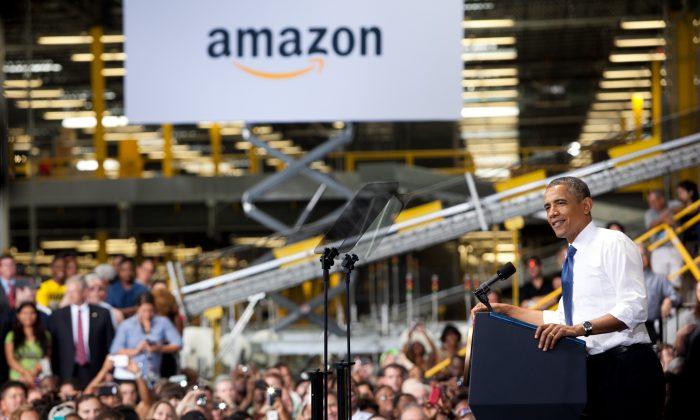Amazon employs 88,400 people and keeps on adding staff, like the planned 5,000 jobs created at a fulfillment center in Tennessee. While this seems like a lot, Amazon makes so much money per employee this efficiency could actually destroy jobs in the retail industry.
“Amazon can operate in facilities far off the beaten path, with nothing but wire shelves and cement floors, and they can serve just as many customers from only a fraction of the locations—and a fraction of the manpower—that their competitors require. On just about every front, the company is more efficient than its peers,” writes Alex Daley of Casey Research.
The implication of his latest report: For every employee Amazon hires, it takes away so much revenue from ordinary brick and mortar competitors they would have to fire five staffers in return. But things are not that simple. The money Amazon saves through logistical efficiency flow into other parts of the economy, thereby creating jobs in other sectors.
Daley compares Amazon with TJX companies, which owns stores such as Maxx, Marshalls, and Home Goods. It also competes on price, just like Amazon. During the last twelve months, TJX generated revenues of $26.27 billion and employed 179,000 people. Amazon on the other hand generated $66.85 billion with its workforce of 88,400. That’s 2.5 times the revenue with half the employees.
The result: A staggering $756,199 of sales per employee. TJX sells $145,759 per employee and Wall-Mart $213,790.
“[F]or every jar of Crazy Aaron’s Thinking Putty that is shipped out the door, the number of people on the payroll is only one-fourth that of Walmart or Target; Or one-fifth that of TJX,” writes Daley. He concludes the more revenue Amazon captures out of the total retail pie, the fewer people are employed in the retail industry in total.
“[I]n some senses, for every job Amazon ‘creates,’ four other jobs go away at a company like TJX.”
But there is another side to the story. While Amazon reduces the need for manpower on one hand, it creates demand for more jobs on the hand.
“Delivering the orders of a few dozen Amazon customers might require dozens of individual packages, shipped to half a dozen different sort facilities, and put on a few dozen different trucks,” Daley writes.
So Amazon and its customers indirectly pay for all the commercial truck drivers, pilots, and parcel delivery personnel. Looking at Amazon’s profit margin, Daley notes the company nearly spends all of its revenue on expenses and barely makes any money for shareholders. The money spent is flowing into the economy and creates jobs there.
“What Amazon doesn’t spend hiring direct employees, the company outsources to others, and the sum of those expenses is enormous,” he writes, citing software developers and jobs related to content licensing as additional examples.
Daley furthermore argues that efficient companies like Amazon produce income for investors which then can be reinvested in new technologies and create new jobs. Despite Amazon taking away jobs in the retail industry, there is a silver lining, according to Daley.
“Any company whose technology improves efficiency in these ways is going to reduce employment in the affected industry. That’s the breaks. But it does not necessarily mean those jobs are gone forever.”






Friends Read Free